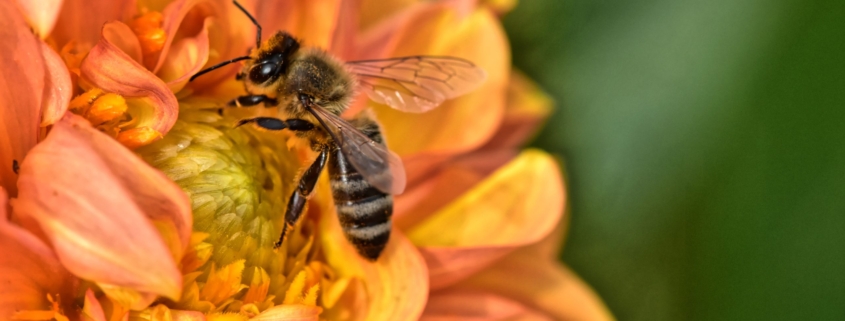Raise a Glass to Wasps: 5 Reasons to Show Bugs Some Love This Valentine’s Day
As Valentine’s Day approaches, florists, jewelers and chocolatiers are preparing for one of their busiest selling seasons. According to the National Retail Federation, in 2020 consumers added $27.4 billion to the economy via Valentine-related purchases. It’s a big day for retailers, but they’re not the only ones hard at work to make the holiday a success. We may not think of bugs as the most romantic of creatures, but they play a key role in the production of many traditional Valentine’s Day gifts. Here are five popular gifts that insects can help produce:
1. Roses
Human-hybridized roses, like the double-flowered red variety we traditionally associate with Valentine’s Day, often have such tight petals that pollinators can’t reach the plant’s pollen. As a result, commercially grown ornamental roses are typically either self-pollinating, or are manually cross-pollinated by humans for certain qualities.
In the wild, however, single-flowered wild roses are visited by many different bee, butterfly and bird species, making them an extremely versatile pollinator plant. If your sweetheart dreams of having their own rose garden, consider planting one using native varieties with simple, open blooms.
2. Chocolate
Chocolate is derived from the cacao tree, whose small, intricate flowers are pollinated by tiny flies in the biting midge, or no-see-um, family. Chocolate midges are native to dense, shady rainforests, and typically lay their eggs in leaf litter. They are not abundant in modern cacao plantations, in which cacao trees are more sparsely planted in forest clearings for ease of access. Trees pollinated by midges in natural settings are, however, significantly more productive.
Small-scale, shade-grown cacao farms benefit biodiversity in many ways. Candy companies of all sizes are looking for ways to integrate the practice into their supply chain, with some companies purchasing shade trees for suppliers that have long farmed in clearings. In the future, you can expect to see more shade-grown chocolate in the supermarket.
3. Perfume
Pollinators are the ultimate fragrance connoisseurs. Plants that depend on cross-pollination draw in insect, bat and bird species with their enticing scents. Just as humans are drawn to perfumes and colognes in attractive packaging, the appearance of flowers also determines which pollinators are most likely to pay a visit.
A common saying in the fragrance industry is that there is “no perfume without jasmine.” About 80% of commercial perfumes contain ingredients derived from jasmine flowers, typically from common jasmine (Jasminum officinale). This plant primarily grows in central Asia and is especially important to moths, which are drawn to its white flowers and the fragrance of jasmine, which is most potent at dusk.
While the Jasminum family is not native to North America, nocturnal and crepuscular pollinators are generally attracted to plants with pale, clustered blooms that open around dusk — to support moths in your area, start by researching native flowers with these qualities.
4. Gold
Termites create mounds by both burrowing underground and building upwards. Researchers in Australia and Cambodia have recently examined how the above-ground structures they create can reflect the mineral composition of the earth below. The phenomenon is still being studied, but some operations have already begun surveying mounds to identify mining sites in a cost-efficient way that minimizes disturbance to land. They may not be welcome in your home, but we already know that termites play an important role as detritivores. We may soon be thanking them for our necklaces and watches, too.
5. Wine
Most grapes are self-pollinating, but wasps can still play important roles in wine production. California vineyards use parasitic wasps to take over the eggs of invasive glassy-winged sharpshooters, which spread disease to grapes. Additionally, when some wasp and hornet species feed on growing grapes, they leave remnants of brewer’s yeast in the fruit. This allows the fermentation process to start before grapes are even picked, resulting in wines with a more complex flavor. This Valentine’s Day consider supporting a vineyard that has adopted nature-based solutions in their pest control and grape cultivation practices, and raise a glass to wasps.
While we think of things like flowers and their fragrance as Valentine’s Day luxuries, insects rely on these resources throughout the year. To show local bugs some love this February, consider the ways in which your workplace can support them. Pollinator projects are a popular way to accomplish this. To get you started, WHC has compiled a list of resources on our Celebrating Pollinators page.
